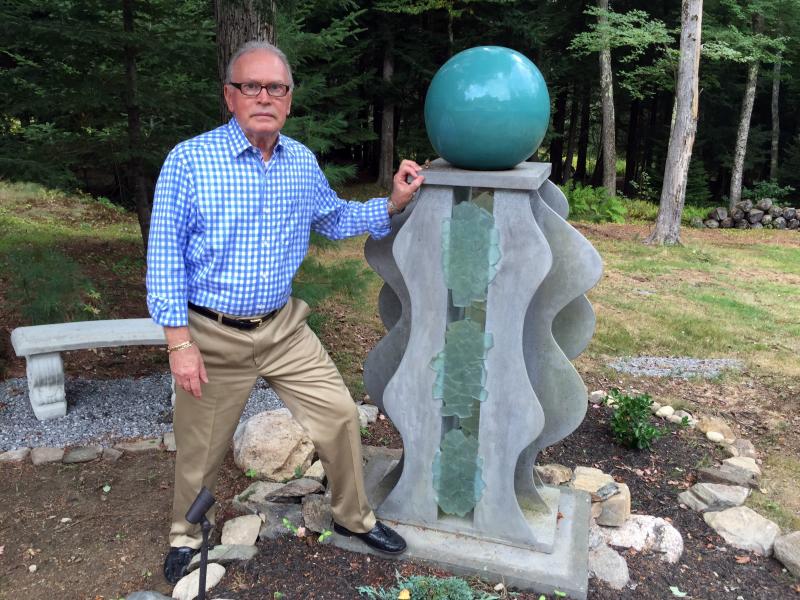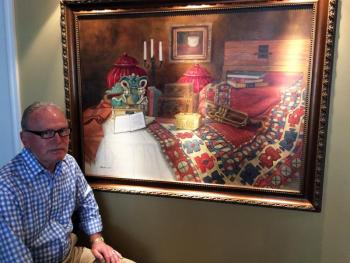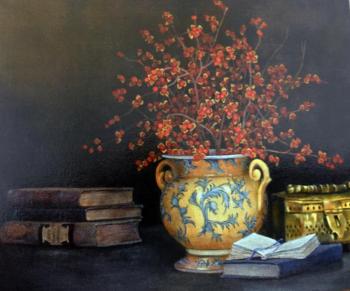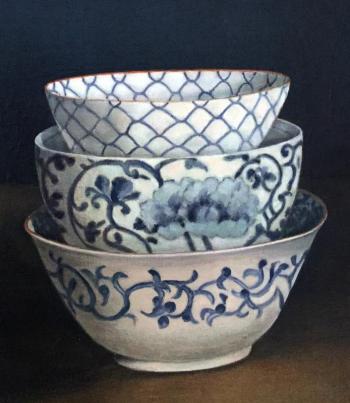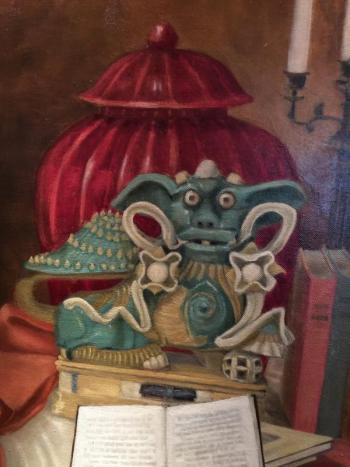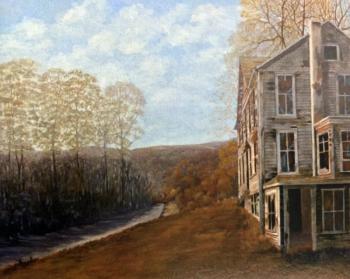A sculpture stands in the backyard of Thomas Cramer’s home in Wiscasset. It's abstract, but clearly reminiscent of the female form. Standing a little over four feet high, the sculpture is made of cast aluminum and blue fused glass. It is striking in the middle of the day, but maybe even more so at night, when it is lit from within.
Cramer is a painter, but he's clearly talented enough to delve into other art forms, like the sculpture, titled “Three Phases,” that he made around 20 years ago for a woman who was looking for a pedestal on which to showcase a vessel. “The vessel was in the shape of the female form, so for my pedestal I abstracted the female form in various stages, from youth to pregnancy to elderly,” he said.
Cramer said the open space and fused glass between the silhouettes signifies “the abstract and infinite of life.” He liked the finished work so much he made a copy of it for himself.
Having grown up in a small village of 300 people in Illinois, Cramer said art wasn't available in school, but he always knew he wanted to be an artist. “I drew and sketched and played around with painting when I was young and through high school.”
During high school and after graduating, he worked in the family business as a hairdresser. His grandfather was a barber, and his mother, aunt and two older brothers were hairdressers.
When he was 21, Cramer moved to California, first to Long Beach, then on to Beverly Hills, continuing to work as a hairdresser.
Cramer never earned a degree in fine art, but while in California he studied drawing, painting and art history at Fullerton College, Irvine Fine Arts Center and the University of Southern California, where he took a course on the technique of the Dutch painter, Johannes Vermeer. He continued his study of art for several years, taking private classes with the German landscape painter, Max Heinback, who taught him how to paint with oils.
Eventually Cramer moved to the Hudson Valley in New York, 90 miles north of New York City, with his husband, interior designer Ron Sanchez. While there, he studied at the Woodstock School of Art, where he developed a richer, softer, more subtle palette than the one he used in Southern California, where light was much brighter.
Last November, the couple moved to Wiscasset.
Cramer said there was a period when he was focusing on abstract sculpture, using fused glass and torched copper, but one day he took a step back and looked at something he'd made and asked himself if he'd like it hanging in his house. The answer was no. “I decided to go back to what I loved doing, which was representational art.”
“When I was in the abstract phase I was really trying to do what the market wanted. I realized I didn't really need the money, so I wanted to do what I really loved. And if other people like it, great, but if they don't, they don't. If I can walk away feeling happy with it, it's okay.”
Cramer's art is very detail-oriented. His favorite subjects for paintings are landscape and still life. A large painting of baskets, worked on over the course of three months, was done using a layer technique. The painting is so finely appointed in its layer upon layer — both opaque and transparent — in a certain light it appears three-dimensional.
Even when he's not physically immersed in a painting, Cramer says he's painting — mentally. “I'm picturing a particular painting in my mind and I think of things I need to do to improve on it.”
Cramer hasn't painted much since moving to Wiscasset. He and Sanchez have been spending most of their time getting their new house and its gardens and landscaping in order. But he said he plans to get back to doing what he loves this fall and winter. “I'm thinking about painting landscapes in Wiscasset. I'll start by sketching and coming up with some concepts and then I hope to spend a lot of time over the winter painting them.”
Cramer's art has been shown at the Bowers Museum and Chapman College in California and at the Kingston Biennial, the A.S.K. Gallery and the Woodstock School of Art in New York. His paintings are represented across the U.S. in collections in California, Nevada, Michigan, Missouri, New Hampshire, New York and Utah, and in the United Kingdom and the Netherlands.


